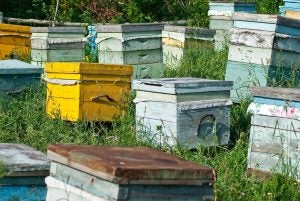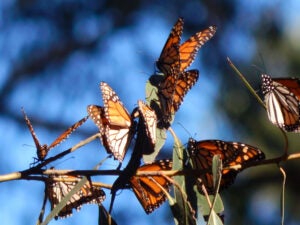You may have heard that bees in California are fish. In June 2022, a California appeals court ruled that four species of bumblebees are to be categorized as fish, allowing the California Fish and Game Department to put them on the endangered species list.
California’s endangered species law, enacted in 1970, calls for special protection for any endangered “bird, mammal, fish, amphibia or reptile,” or in other words, anything with a backbone. So how do you get insects — such as bees — from that definition? Seems the legislators had all seafood in mind, because the law also includes clams, crabs, and lobsters, which have no backbone. Soon, interpreters of the law included a snail, a shrimp, and a crayfish, also backboneless.
The court says the legislative intent was to protect anything that lives on land, sea, or air. So, the Fish and Game Commission’s proposal to protect bumblebees by broadening the definition of “fish” to include insects was allowed by the court.
Actually, this is not the first time bumble bees have been on an endangered species list. The first one listed in the U.S. was the Rusty Patched Bumble Bee (Bombus affinis), whose range includes the Midwest and Eastern states plus Ontario. The U.S. Fish and Wildlife service listed it in 2017. Canada listed it in 2012. Two bumble bees whose range includes the Western states were listed by the U.S. in 2021 — the American (B. pensylvanicus) and Franklin’s (B. franklin). Europe has also listed several bumble bees as endangered.

One would think insects, including bees, could take care of themselves. But many entomologists around the world are concerned that a lot of insects are endangered. Does that matter? Many songbirds feed on insects. Their numbers are declining. Close to home, I have noticed a big decline in songbirds that come to my feeder. I used to have dozens of goldfinches to feed every summer: Last year I had two pair. I haven’t seen a bluebird in over 20 years. Even the numerous Oregon juncos that I feed in the winter have decreased by half over the past few years. So far a meadow lark still sings on my morning walk in the spring.
As for bumble bees, I saw one one day last summer. Many bees and other insects are needed for pollination of crops and flower gardens. Others insects are needed to feed on harmful bugs. I seldom see a ladybug anymore. Years ago they were common in my wheat fields, feeding on aphids, and often substituted for an insecticide spray.
Due to modern systemic insecticides, I haven’t sprayed any insecticide on my wheat for years, and that’s nice. But are we being too successful with insect control? Maybe we need to think about how we can provide habitat for bees, birds, and predatory bugs.
The other day I was driving down the freeway near Walla Walla, thinking about this article, and I noticed the 50- to 100-foot right-of-way on each side of the pavement was well groomed. Why not, I thought, plant a good dryland grass with wild flowers and some shrubs, even trees, in some places. Food for the birds and nectar for bees.
When I got back to my computer at home I found this concept had already been employed on many Midwest and Eastern freeways. For instance, Interstate 35, which runs from Duluth, Minnesota, to Laredo, Texas, is designated the “Monarch Highway.” Habitat along this route is managed in a cooperative agreement among the Departments of Transportation of the states through it passes.

And what about honeybees? According to press reports, beekeepers lose around 30 percent of their hives every winter. If that keeps up, they say, honeybees in the U.S. will be extinct and many crops won’t get pollinated. The truth is, most beekeepers recover their losses during the summer. The beehive inventory in the U.S. has been steady at about 2.7 million for the last decade. Worldwide, there were 101.6 million hives in 2021, which is more than the 99.5 million hives there were in 2020.
There is a lot of research indicating a significant decline in insect populations worldwide over the last several decades. An insect trap 36 feet above the ground monitored by the Rothamsted agricultural research station in England for nearly 30 years (1973-2002) showed a decline in total insects trapped of 70 percent. Other long-term studies around the world show similar declines.
What is causing the decline? Dave Goulson, an entomologist in England, has written a book about the loss of insects (Silent Earth, Averting the Insect Apocalypse). He discusses several probable causes: Global warming, loss of habitat, loss of food sources due to super-effective weed control, excessive use of nitrogen fertilizers that causes plants to produce more anti-insect toxins, and, of course, pesticides in general, particularly systemics such as the neonics. In other words, so-called industrial farming. He also blames honeybees, which are introduced, for competing with native pollinators for nectar and pollen.
I expect few insects will actually go extinct. One thing we can be sure of. If nuclear war destroys civilization, insects will take over the world.
Jack DeWitt is a farmer-agronomist with farming experience that spans the decades since the end of horse farming to the age of GPS and precision farming. He recounts all and predicts how we can have a future world with abundant food in his book “World Food Unlimited.” A version of this article was republished from Agri-Times Northwest with permission.



